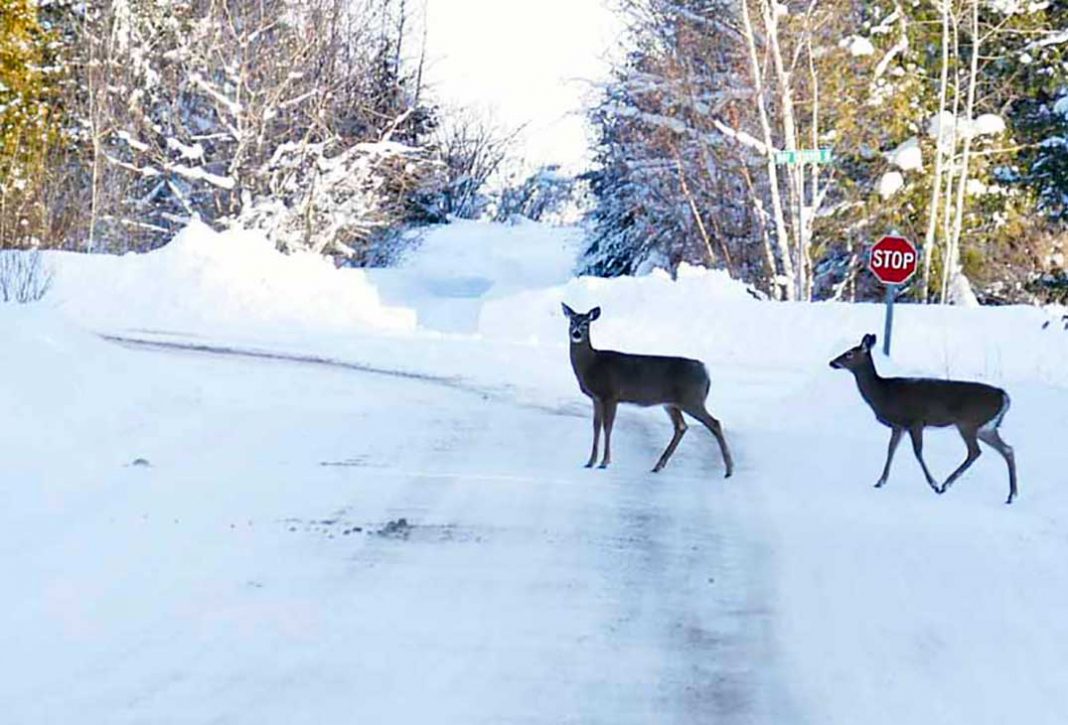MANITOULIN ISLAND – Hunters should expect fewer deer being available on Manitoulin Island to harvest this year, a member of the Gore Bay Fish and Game Club (GBFGC) told members of the Ontario Federation of Anglers and Hunters (OFAH) Zone D (which includes Manitoulin) at a meeting held last weekend.
“I have heard mixed reviews on the health of the deer population on Manitoulin Island,” said Roy Polsky, chair of the OFAH Zone D.
“Last year, as we all know, was an extreme year for weather conditions and the deer on the Island,” said Ian Anderson of the GBFGC, who provided a report to the OFAH members. “I have lived on the Island since 1972, and I can only recall three winters that compared to last year in terms of severity. And we might not have had a single year as dramatic as February was, it seemed to snow hard every day.”
Mr. Anderson said all animals, not just deer, were suffering by February of this year. “We started seeing dead deer in mid-February; their body weights were probably 50 percent of what they should be. In bone marrow inspections of some of the deer you know there is a huge problem when you can pour the bone marrow out of a dead deer like soup. I anticipated there would be a significant loss of deer in the winter and this was confirmed by individual sitings.”
The meeting was told members of the GBFGC carried out an inspection of a 70-acre parcel of property on the Island in which 17 dead deer were found last winter. “We found the jaws of those animals and the majority was last year’s fawns and one big adult.” He said the loss last winter of deer could easily be in the thousands.
Mr. Anderson also told the meeting that in the front yard of his property in Kagawong on Saturday morning he saw six deer from his window—four adult does and two fawns—the latter two both undersized. “On average a doe will have 1.2 does,” he said. “Every adult doe you see in a field should have one, two or even sometimes three fawns. What I’m seeing is a lack of fawns this year, as we expected.”
“We will see a reduction in the number of fawns and there will be quite a reduction in male/female yearlings and adult does,” said Mr. Anderson. He said he is pleased the Ministry of Natural Resources and Forestry accepted and put in place a reduction in the number of deer tags provided for this year’s annual deer hunt on the Island.
However, Mr. Anderson noted that deer populations can recover quickly and the Island enjoyed a relatively good summer and fall, and food sources such as apples, nuts and green grass are plentiful and most deer should be able to increase their weight overall going ahead. “If deer have a really good fat content going into the winter they have a bit of an advantage if a severe winter hits.”
“But overall, there will be less deer available to hunt this fall,” stated Mr. Anderson. He pointed out that Manitoulin, with the help of the OFAH and Manitoulin Streams Improvement Association and the North Shore clubs were successful in breaking trails deer to gain access for food sources last winter; that in turn reduced the deer mortality on the Island.
“I’m hearing this coming winter is going to be comparable to last year’s,” said one person at the meeting. And one person said they had heard the winter is going be even more extreme this year.
Deer in some areas will fare better than others and some will be worse off, said Mr. Anderson. The reductions will be felt all over the Island, he said.
Mr. Anderson said with the high depth of snow on the ground last winter, “I’ve never seen in my 50 winters here, where the deer yards would basically shrink within 10 days. The deer kept compacting into the deer yards. There were a couple of yards that went from four kilometers to one-half kilometre wide in a matter of days. This is what happens when deer concentrate in one area.”
“One of the saving graces with winter last year was the ice storms we had, because it brought the cedar tree branches and limbs down to a level the deer could reach,” continued Mr. Anderson. “The freezing rain was actually good for our deer.”
“The best thing we can do is start early enough before the winter comes to break trails for the deer to access food sources,” said Mr. Anderson. “A long trail system allows places for deer to access food sources and to get away from predators.”





